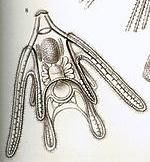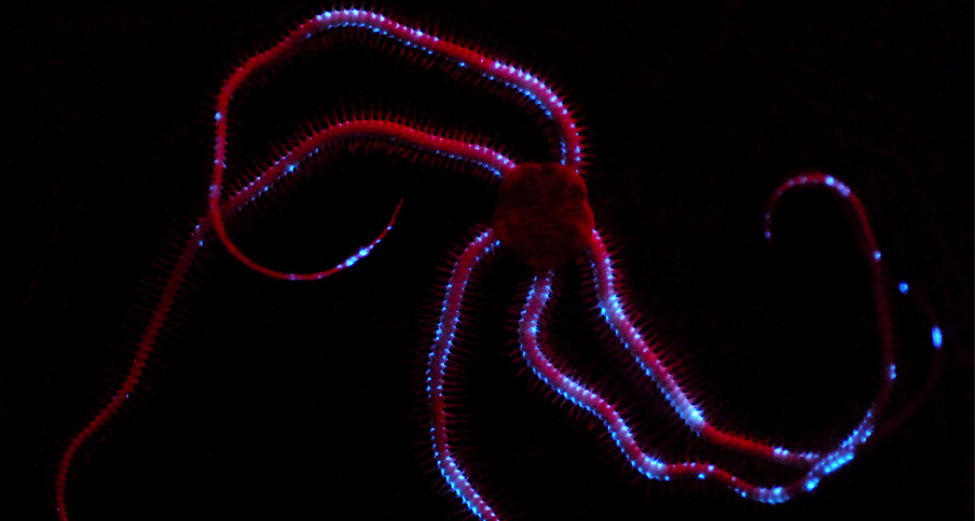Reproduction
Most ophiuroid
sea stars reproduce in a similar way. A study by Nicholas Holland (1979) is the first to explain
the structure of the hyaline layer and fertilization envelope
and the cortical reaction of the ophiuroid, Ophiopholis
aculeata. In this species, there is an oviparous female with
little eggs and an ophipluteus larva, but the egg membranes are
of little importance. These are similar to many characteristics
of other ophiuroids and therefore the conclusions of this report
can represent the general ophiuroid.

Thirty males and thirty females were taken for this experiment and within hours of gathering five females spawned (which only took a couple minutes) and created hundreds of eggs. These eggs are gametes made by the female spawning by insemination. The unfertilized egg is enclosed by a clear jelly-like layer; it is round and a dark yellow shade. This layer will dissipate after ten minutes following insemination. The outside of the egg is covered in multiple microvilli. The most evident organelles in the peripheral cytoplasm of the egg are cortical granules. These are membrane-bound organelles that are round containing small granular components and are dispersed under the plasma membrane. The components are a semi-thick core with thick patches and a semi-thick cortex, which swells and makes strand-like substance. The peripheral cytoplasm contains oval granules that are membrane-bound and contain thick contents. Randomly in the cytoplasm are mitochondria, ribosomes, rough endoplasmic reticulum, sometimes Golgi complex, and a small amount of vacuoles. Outside the plasma membrane is a vitelline coat, only separated from the membrane by a tiny space (Holland 1979).
After an hour and a half following insemination, the zygote is enclosed in a dense, inner hyaline layer and a slim, outer fertilization envelope. Few microvilli are still seen at this point. Exocytosis of the cortical granules is likely what causes the volume and diameter decrease from the unfertilized egg to the zygote phase. In this phase most of the cortical granules have reacted and are no longer in the peripheral cytoplasm. The fertilization envelope, hyaline layer, and perivitellline space (between the fertilization envelope and hyaline layer) is created from cortical granule substance (Holland 1979).
Nine hours following insemination every embryo is made of 32 blastomeres surrounding a blastcoel. Each embryo is surrounded by one layer of extracellular material created from the hyaline layer. There is no apparent fertilization envelope at this stage (Holland 1979).
Ophiuroids generally reproduce sexually and grow through a larval stage. Ophiuroidea have a ophiopluteus larvae that has bilateral symmetry, a digestive system, is planktonic and feeds (Hunter 2011).
To find out how this star reacts to different animals, visit the Interactions page.
